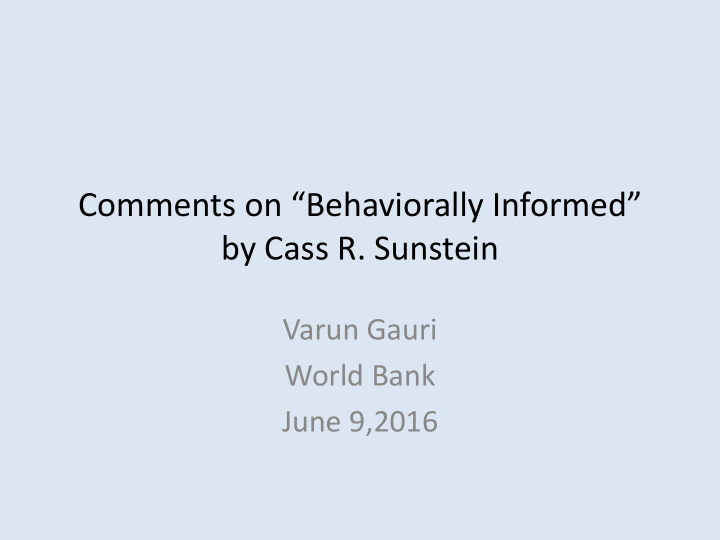



Comments on “Behaviorally Informed” by Cass R. Sunstein Varun Gauri World Bank June 9,2016
1. Long Term Effects • Lowering future attentional costs (Madrian and Shea 2001) • Technological lock in (Alcott and Rogers 2014) • “Nudge and flow” (Goyer et al, in press) • Habits
2. Libertarian paternalism “Suppose, for example, that a particular default rule would place a strong majority of the relevant population in the situation that they would favor if they made an informed choice. If so there, there is a legitimate reason to adopt that default rule (with the understanding that for those who differ form the majority, it remains possible to opt out).”
3. Dynamics of social norms “Consider as well the problem of distracted driving. On October 1, 2009, the President issued an executive order that bans federal employees from texting while driving. Such steps can help promote a social norm against texting while driving, thus reducing risks.”
4. Will nudging become a craft or science? “It is true that if these findings are taken as a whole and in the abstract, they will not lead to a clear or unique prediction about heavier. Particular situations must be investigated in detail in order to understand likely outcomes”
Nudging the nudgers • Governance is core bottleneck in development • Behavioral insights could also help with: – Productivity and effort – Impartiality and objectivity – Governance by indicators
Recommend
More recommend